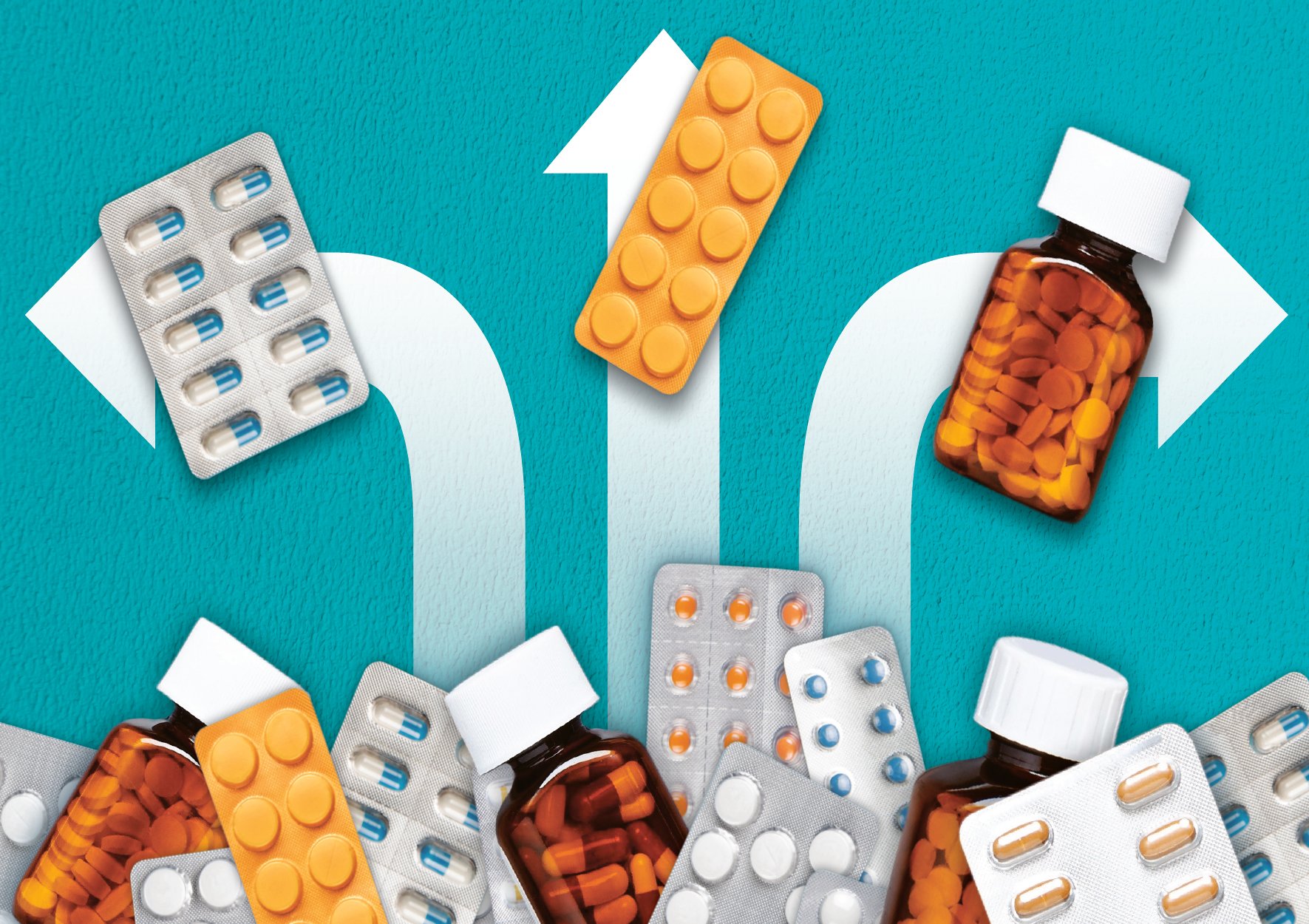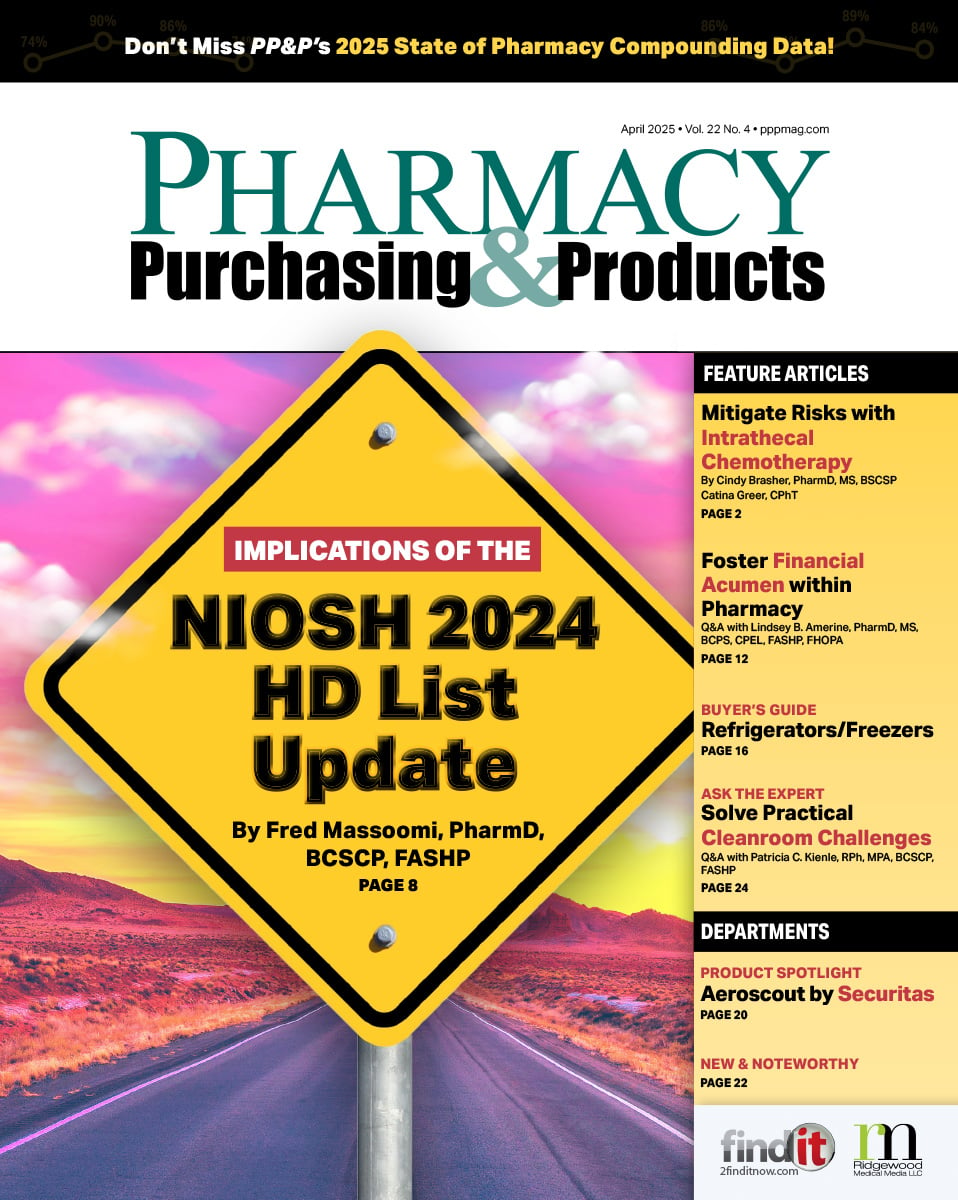- Show Menu
- Contact Us
- FAQs
- Reader Service
- Survey Data
- Survey Winners
- Testimonials
- Upcoming Events
- Webinars
- White Papers
Steps to Ensure Emergency Preparedness
An emergency preparedness program provides guidance on how to respond to both natural and man-made disasters that could impact hospital operations in order to ensure the health and safety of each patient population under the facility’s care.1 The plan must address the four key elements of emergency preparedness2:
- Risk assessment and emergency planning
- Development and implementation of necessary policies
- Communication plan
- Training and testing
While natural disasters are common throughout the US, it makes sense to focus on those natural disasters that may be more common to your institution’s location. Prevalent natural disasters in the US include:
- Extreme precipitation
- Floods
- Hurricanes
- Winter storms
- Extreme temperatures (hot and cold)
- Droughts
- Wildfires
Anticipating and preparing for these natural disasters is a rising concern not only for health systems, but for health security in general. It is imperative that organizations are prepared and ready to mobilize resources to prevent, mitigate, and recover from these events.
The goals of emergency preparedness are to anticipate threats, prevent loss of life, preserve physical and psychological health, minimize economic loss, and reinforce confidence and resiliency.3 The National Health Security Preparedness Index rates the US on the readiness for disasters, disease outbreaks, and other emergencies.4 On this scale, the higher the index, the higher the state of preparedness. In 2019, the US rated a 6.7 out of 10 on the National Health Security Preparedness Index.4 While facilities across the US are steadily increasing their preparedness, the pace of improvement remains modest. Inequities in protection persist as states have different needs, and resources are not equitably allocated across the country.4 For example, national stockpiles may not be evenly distributed, and some areas of the country are more prone to natural disasters than other areas.
Pharmacy’s Role
Pharmacy involvement in the organization’s overall plan is key to supporting emergency preparedness. While the pharmacy department may receive a variety of assignments during an emergency event, perhaps the most important responsibility is to avoid panic and exude a calm, confident demeanor. Pharmacists should seek to volunteer in any role within which they may be able to assist throughout the event. Additionally, pharmacists must be involved in planning, sharing evidence-based strategies, discouraging stockpiling, and training.5 Pharmacy leaders may also assume additional responsibilities, such as5:
- Reviewing or creating the plan for the department and institution for emergencies
- Managing logistics
- Coordinating with the community
- Ensuring medications are stocked and used appropriately
- Avoiding stockpiling or panic buying
- Ensuring staff are trained and understand their roles
- Scheduling after-action debriefs to recognize and address any gaps
Anticipated Emergencies
Anticipated emergencies are those which the organization can predict or expect to occur. During these emergencies, it is important to understand the organization’s plan and have a pharmacy representative on the planning group. Typical goals during an anticipated emergency include: ensuring the safety of patients, visitors, and staff; resuming and sustaining care; protecting the facilities; containing hazards; supporting the community; and coordinating information for public dispersal. The plan for anticipated emergencies should focus on people, supplies, and recovery.
People
A staffing plan is a critical component of the response to anticipated emergencies. Consideration should be paid to maintaining primary and secondary response teams (or, depending on staff resources, A, B, and C teams). Pharmacy leadership should be present on all teams. It is important to consider that the emergency event may span longer than one shift. When multiple shifts are part of the response, thought should be given toward how long individuals should be on shift at an organization before rotating to the other team.
Staff should ensure that they have all items needed when they report. This can include clothes, shoes, jackets, sheets, pillows, towels, toiletries, flashlights, batteries, snacks, and something to do when they are not working. Last of all, leaders should plan for staff comfort as much as possible. Establish a plan to support showering, meals, and exercise. In addition, consider an assessment of the pay structure.
Pharmacy leaders should be diligent about communication. The pharmacy emergency preparedness leader, administrator on call, or other designee should be responsible for activating a team to report for duty. It should be clear if this individual’s guidance supersedes other staffing plans. As different emergencies occur, the activated team should rotate to ensure the same team does not always report first.
Supplies
If anticipated emergencies are common to the organization’s area, consider creating emergency supply lists with vendors, emergency contacts, and provide sufficient refrigeration space. Common required medications may include antimicrobials, intravenous fluids, inhalers, and opioids. If patients are evacuated, consider how electronic medical records will be printed, and ensure that each patient will have a sufficient supply of medications.
Recovery
It is important to establish a timeline to expected recovery. Additionally, note that anticipated emergencies may render the health system or parts of the health system inaccessible for some time. Pharmacy leaders should seek to debrief with pharmacists, pharmacy technicians, other leaders, and each team (individually) that responded to the emergency. Thought should also be given to staff concerns; ensure that leaders respond consistently to challenges around pay, leave, living arrangements, and complaints.
Unanticipated Emergencies
Unanticipated emergencies come in all forms and have varying impacts on hospital and departmental operations. These events may occur within the facility or in the surrounding community. The impact may be felt immediately on personnel and supplies, or in the near future through upstream effects on the supply chain.
Examples of unanticipated emergencies include mass casualty incidents, fires or floods within the facility, patient diversion due to capacity saturation, epidemics, and pandemics. It is not feasible to train and plan for every type of unanticipated disaster or emergency scenario, but general emergency preparedness plans can help guide the initial response during an event. General plans may include priorities for personnel and resources, reporting structure during activation, and sub-plans for common occurrences.
FIGURE 1 illustrates how an institution may organize their sub-plan for capacity management. The current level or condition is escalated based on the number of patient throughput points impacted (eg, emergency department, perioperative, scheduled admissions, discharges). Additional triggers may include the capacity of the intensive care unit, as well as intermediate and stepdown capacities. At Level 1, frontline staff are primarily responsible for driving the operations. As the levels escalate, higher levels of leadership are involved to ensure appropriate resourcing.
Click here to view a larger version of this Figure
Resources
Pharmacy leaders are encouraged to familiarize themselves with local, state, and federal resources available for emergency/disaster management. Countless training and education opportunities exist for the pharmacy leader and their teams, many of which are offered without charge through government partnerships.
- Board of Pharmacy (BOP): State boards of pharmacy often share state emergency declarations and relevant information that impacts pharmacy practice. BOPs should be a primary resource for pharmacy leadership during major disasters.
- Health Department: State, county, and municipal health departments typically provide access to training and educational programs, situational updates during declared events, and emergency resource stockpiles.
- Center for Domestic Preparedness: Advanced, all-hazards training is offered at the Federal Emergency Management Agency’s (FEMA) facility in Anniston, Alabama. Numerous courses are available including train-the-trainer variants. More information is available at: https://cdp.dhs.gov.
- Emergency Management Institute’s Independent Study: These online, self-paced training courses are designed for individuals with emergency management responsibilities. A wide range of course topics include the incident command system, emergency planning, effective communication, and more. Additional information is available at: https://training.fema.gov/is.
- Professional Organizations: Many professional organizations offer resources and education on the topic of emergency preparedness.
See the SIDEBAR for case examples of specific emergencies.
Conclusion
Emergency preparedness is a growing area of practice in health care, and pharmacists should actively seek involvement in this practice. As essential members of emergency preparedness teams, pharmacists can provide unique perspectives.
Given the myriad aspects to ensuring proper preparation, this process can seem overwhelming at the outset. Exploring the following questions can help guide the process:
- Does your organization have emergency preparedness plans for disasters common to the US?
- Does your organization include a pharmacy representative on the emergency preparedness team?
- Does your organization and department prepare for both anticipated and unanticipated emergencies?
- What steps are being taken by your health system and facility to address this issue?
- What have you found to be a best practice?
If these questions are difficult to answer, invest the necessary time working with your team to ensure that a preparedness plan is in place.
References
- Centers for Medicare and Medicaid Services. Survey and certification group frequently asked questions (FAQs) emergency preparedness regulation. https://www.cms.gov/Medicare/Provider-Enrollment-and-Certification/SurveyCertEmergPrep/Downloads/FAQ-Round-Four-Definitions.pdf. Accessed September 21, 2020.
- Centers for Medicare and Medicaid Services. Core EP rule elements. https://www.cms.gov/Medicare/Provider-Enrollment-and-Certification/SurveyCertEmergPrep/Core-EP-Rule-Elements. Accessed September 21, 2020.
- United States Department of Health and Human Services. National health security strategy 2019-2020. January 2019.
- Robert Wood Johnson Foundation. National Health Security Preparedness Index. May 2019.
- ASHP statement on the role of health-system pharmacists in emergency preparedness. Am J Health Syst Pharm. 2003;60(19):1993-1995.
 Tyler A. Vest, PharmD, MS, BCPS, BCSCP, is a pharmacy manager of automated dispensing cabinetry and controlled substances and an interim pharmacy coordinator of medication delivery services at Duke University Hospital in Durham, North Carolina. He is also an assistant professor of clinical education at the UNC Eshelman School of Pharmacy. Tyler completed his pre-pharmacy studies at the University of Kentucky, and his Doctor of Pharmacy at the University of Cincinnati James L. Winkle College of Pharmacy. He is also a recent graduate with an MS in Pharmaceutical Sciences with a specialization in Health-System Pharmacy Administration from the UNC Eshelman School of Pharmacy. Tyler’s professional interests include acute care operations, leadership development, oncology, pharmacy technician advancement, distribution models, productivity and monitoring, and the medication-use process.
Tyler A. Vest, PharmD, MS, BCPS, BCSCP, is a pharmacy manager of automated dispensing cabinetry and controlled substances and an interim pharmacy coordinator of medication delivery services at Duke University Hospital in Durham, North Carolina. He is also an assistant professor of clinical education at the UNC Eshelman School of Pharmacy. Tyler completed his pre-pharmacy studies at the University of Kentucky, and his Doctor of Pharmacy at the University of Cincinnati James L. Winkle College of Pharmacy. He is also a recent graduate with an MS in Pharmaceutical Sciences with a specialization in Health-System Pharmacy Administration from the UNC Eshelman School of Pharmacy. Tyler’s professional interests include acute care operations, leadership development, oncology, pharmacy technician advancement, distribution models, productivity and monitoring, and the medication-use process.
 Jordan T. DeAngelis, PharmD, MS, BCPS, coordinates pharmacy procurement and emergency preparedness at Duke University Hospital in Durham, North Carolina. He completed his Bachelor of Science and Doctor of Pharmacy degrees at the University of Connecticut. Jordan also completed a 2-year residency in Health-System Pharmacy Administration at Duke University Hospital while simultaneously pursuing his MS in Pharmaceutical Sciences with a specialization in Health-System Pharmacy Administration from the UNC Eshelman School of Pharmacy. His professional interests include emergency and disaster readiness, drug supply chain management, pharmaceutical contracting, 340B program leadership, and pharmacy business and revenue management.
Jordan T. DeAngelis, PharmD, MS, BCPS, coordinates pharmacy procurement and emergency preparedness at Duke University Hospital in Durham, North Carolina. He completed his Bachelor of Science and Doctor of Pharmacy degrees at the University of Connecticut. Jordan also completed a 2-year residency in Health-System Pharmacy Administration at Duke University Hospital while simultaneously pursuing his MS in Pharmaceutical Sciences with a specialization in Health-System Pharmacy Administration from the UNC Eshelman School of Pharmacy. His professional interests include emergency and disaster readiness, drug supply chain management, pharmaceutical contracting, 340B program leadership, and pharmacy business and revenue management.
SIDEBAR
Case Examples of Disaster Emergencies
Hurricanes
In North Carolina, it is not uncommon to experience at least one hurricane each year. The effects of the storm are often most damaging to coastal regions; nevertheless, flooding and high winds may plague inland communities as well. In September 2018, Hurricane Florence struck the North Carolina coast and caused significant damage. When roads are impassable and staff cannot reach the hospital, preparedness measures are impacted. In this case, hospitals and health systems throughout North Carolina assisted the impacted communities by redeploying staff and resources.
Snow
While North Carolina is not known for its snowstorms, at least once a year the state will experience a storm with significant snowfall accumulation. In December 2018, 13-15 inches of snow fell across the central North Carolina area. This resulted in a large number of callouts, which can affect the safety of the facility’s operations. It quickly became evident that a plan was required for housing staff within the institution when they are unable to get home due to adverse weather conditions. Additionally, a comprehensive transportation plan should be created to ensure staff can get to the institution safely. In addition, conduct a review of the pharmacy’s inventory, as delivery and drug procurement can also be challenging during winter storms in states that do not normally experience significant amounts of snow.
Mass Casualty Incidents
A 50-car pileup on a busy North Carolina interstate in August 2019 sent dozens of patients to area emergency departments (EDs). This event occurred on a Saturday evening when staffing levels were minimal. While the majority of patients were seen for relatively minor injuries, there were a few significant traumas. The pharmacy department responded by assigning cross coverage of the ED order queue in order to free up the ED pharmacist. In addition, rapid sequence intubation (RSI) kits were quickly mobilized to the ED.
On an April morning in 2019, a natural gas leak in Durham, North Carolina resulted in an explosion and fire that destroyed several buildings, damaged dozens more, killed two people, and injured 25 others. Among the 25 injured were nine firefighters. The pharmacy department’s response included:
- Pharmacy leader reported to hospital command center
- Redeployment of clinical personnel to the ED
- Pharmaceutical supplies were mobilized, including RSI kits and IV antibiotics
- ADC restocks were prioritized for the ED
- Additional supplies of opioid analgesics were retrieved and made available via a paper issue process
COVID-19
In early 2020, Severe Acute Respiratory Syndrome Coronavirus 2 (SARS-CoV-2) swept across the globe causing the deadly COVID-19. The emergence of COVID-19 rattled even the most prepared health care systems in the world and brought the entire planet to a standstill. This pandemic has challenged nearly every industry to find a “new normal” and will most certainly have long-lasting implications on pharmacy practice. A discussion of the numerous responses and actions taken within a pharmacy department relating to COVID-19 warrants a separate, dedicated publication.
Like what you've read? Please log in or create a free account to enjoy more of what www.pppmag.com has to offer.









